Mid-day siesta in natural populations of D. melanogaster from Africa exhibits an altitudinal cline and is regulated by splicing of a thermosensitive intron in the period clock gene
- PMID: 28114910
- PMCID: PMC5259850
- DOI: 10.1186/s12862-017-0880-8
Mid-day siesta in natural populations of D. melanogaster from Africa exhibits an altitudinal cline and is regulated by splicing of a thermosensitive intron in the period clock gene
Abstract
Background: Many diurnal animals exhibit a mid-day 'siesta', generally thought to be an adaptive response aimed at minimizing exposure to heat on warm days, suggesting that in regions with cooler climates mid-day siestas might be a less prominent feature of animal behavior. Drosophila melanogaster exhibits thermal plasticity in its mid-day siesta that is partly governed by the thermosensitive splicing of the 3'-terminal intron (termed dmpi8) from the key circadian clock gene period (per). For example, decreases in temperature lead to progressively more efficient splicing, which increasingly favors activity over sleep during the mid-day. In this study we sought to determine if the adaptation of D. melanogaster from its ancestral range in the lowlands of tropical Africa to the cooler temperatures found at high altitudes involved changes in mid-day sleep behavior and/or dmpi8 splicing efficiency.
Results: Using natural populations of Drosophila melanogaster from different altitudes in tropical Africa we show that flies from high elevations have a reduced mid-day siesta and less consolidated sleep. We identified a single nucleotide polymorphism (SNP) in the per 3' untranslated region that has strong effects on dmpi8 splicing and mid-day sleep levels in both low and high altitude flies. Intriguingly, high altitude flies with a particular variant of this SNP exhibit increased dmpi8 splicing efficiency compared to their low altitude counterparts, consistent with reduced mid-day siesta. Thus, a boost in dmpi8 splicing efficiency appears to have played a prominent but not universal role in how African flies adapted to the cooler temperatures at high altitude.
Conclusions: Our findings point towards mid-day sleep behavior as a key evolutionary target in the thermal adaptation of animals, and provide a genetic framework for investigating daytime sleep in diurnal animals which appears to be driven by mechanisms distinct from those underlying nighttime sleep.
Keywords: Altitude; Circadian; Drosophila; Mid-day siesta; Period gene; Sleep; Splicing; Temperature; Thermal adaptation; dmpi8 intron.
Figures
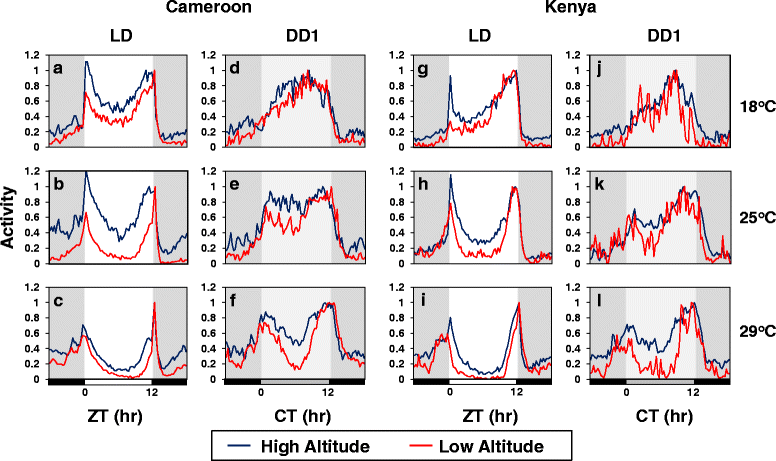
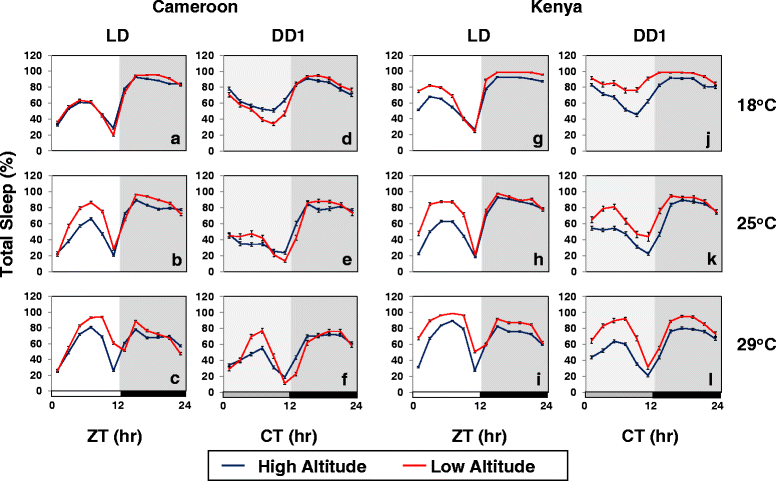
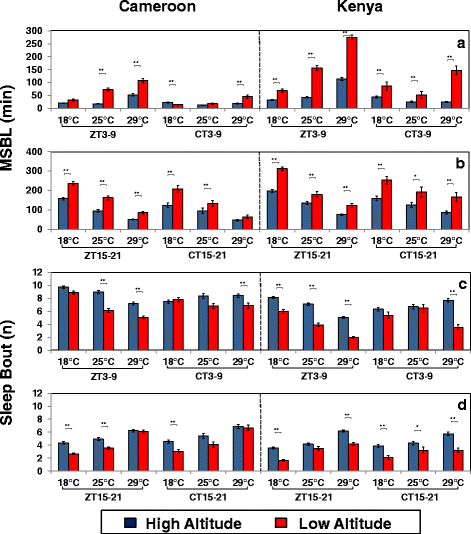
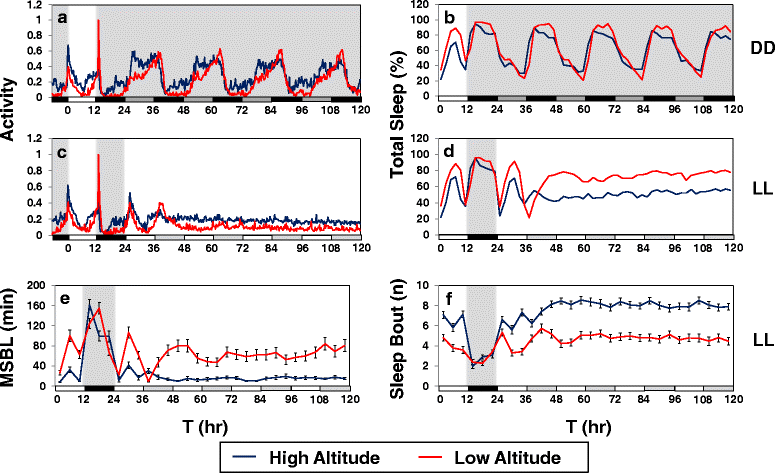
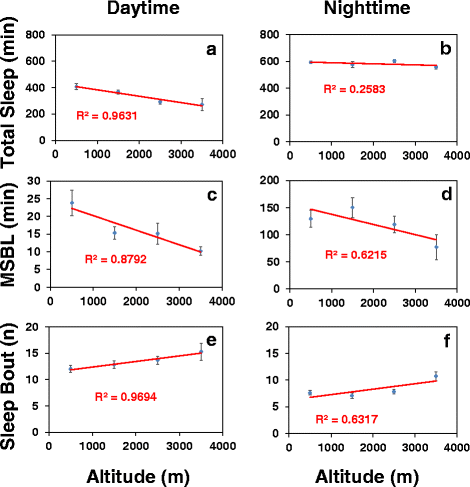
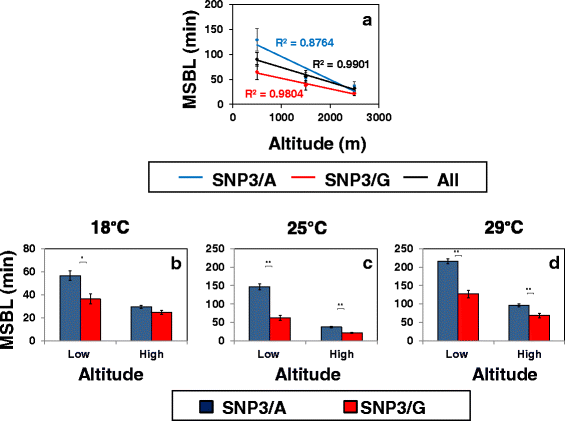
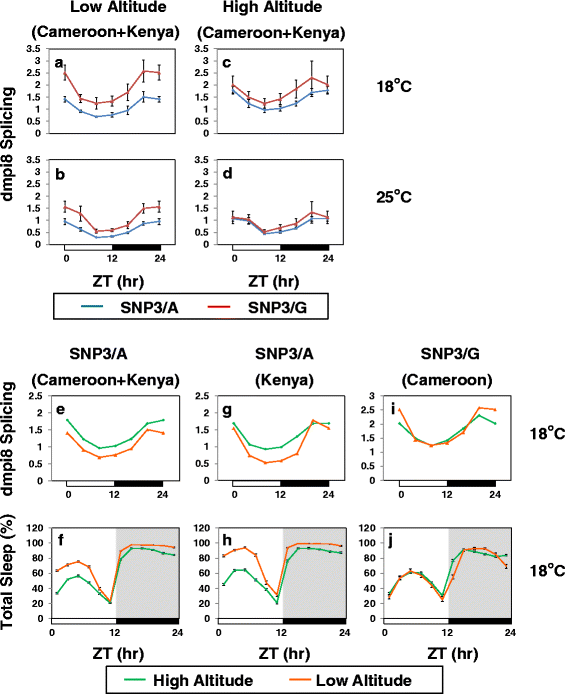
Similar articles
-
The SR protein B52/SRp55 regulates splicing of the period thermosensitive intron and mid-day siesta in Drosophila.Sci Rep. 2018 Jan 30;8(1):1872. doi: 10.1038/s41598-017-18167-3. Sci Rep. 2018. PMID: 29382842 Free PMC article.
-
Parallel clinal variation in the mid-day siesta of Drosophila melanogaster implicates continent-specific targets of natural selection.PLoS Genet. 2018 Sep 4;14(9):e1007612. doi: 10.1371/journal.pgen.1007612. eCollection 2018 Sep. PLoS Genet. 2018. PMID: 30180162 Free PMC article.
-
Natural variation in the Drosophila melanogaster clock gene period modulates splicing of its 3'-terminal intron and mid-day siesta.PLoS One. 2012;7(11):e49536. doi: 10.1371/journal.pone.0049536. Epub 2012 Nov 13. PLoS One. 2012. PMID: 23152918 Free PMC article.
-
Thermosensitive splicing of a clock gene and seasonal adaptation.Cold Spring Harb Symp Quant Biol. 2007;72:599-606. doi: 10.1101/sqb.2007.72.021. Cold Spring Harb Symp Quant Biol. 2007. PMID: 18419319 Review.
-
The Drosophila TRPA1 Channel and Neuronal Circuits Controlling Rhythmic Behaviours and Sleep in Response to Environmental Temperature.Int J Mol Sci. 2017 Oct 3;18(10):2028. doi: 10.3390/ijms18102028. Int J Mol Sci. 2017. PMID: 28972543 Free PMC article. Review.
Cited by
-
Flies as models for circadian clock adaptation to environmental challenges.Eur J Neurosci. 2020 Jan;51(1):166-181. doi: 10.1111/ejn.14180. Epub 2018 Oct 22. Eur J Neurosci. 2020. PMID: 30269385 Free PMC article. Review.
-
Norpa Signalling and the Seasonal Circadian Locomotor Phenotype in Drosophila.Biology (Basel). 2020 Jun 16;9(6):130. doi: 10.3390/biology9060130. Biology (Basel). 2020. PMID: 32560221 Free PMC article.
-
The SR protein B52/SRp55 regulates splicing of the period thermosensitive intron and mid-day siesta in Drosophila.Sci Rep. 2018 Jan 30;8(1):1872. doi: 10.1038/s41598-017-18167-3. Sci Rep. 2018. PMID: 29382842 Free PMC article.
-
Daily Activity of the Housefly, Musca domestica, Is Influenced by Temperature Independent of 3' UTR period Gene Splicing.G3 (Bethesda). 2017 Aug 7;7(8):2637-2649. doi: 10.1534/g3.117.042374. G3 (Bethesda). 2017. PMID: 28620087 Free PMC article.
-
Parallel and population-specific gene regulatory evolution in cold-adapted fly populations.Genetics. 2021 Jul 14;218(3):iyab077. doi: 10.1093/genetics/iyab077. Genetics. 2021. PMID: 33989401 Free PMC article.
References
MeSH terms
Grants and funding
LinkOut - more resources
Full Text Sources
Other Literature Sources
Molecular Biology Databases

